Millennials in NYC and their love/hate relationship with food delivery services
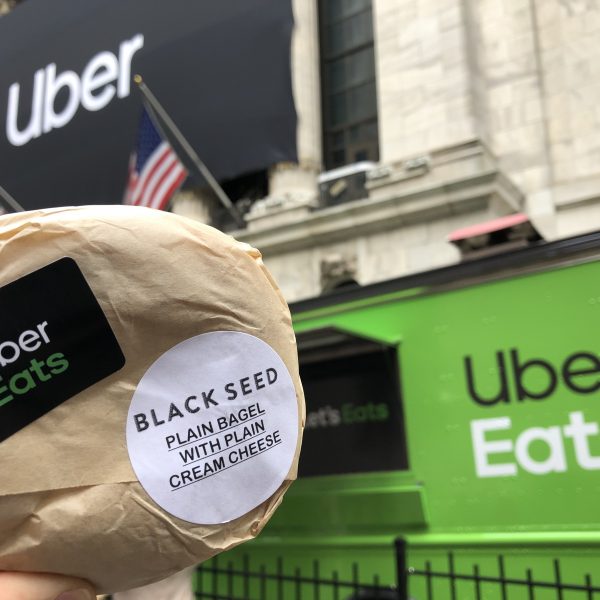
By Minjie Yim
Millennials love food delivery. It’s a well-known fact – a culture even, especially here in New York City. So I was interested to see how the industry has fared across the nation during this period of lockdown as consumers have transitioned from dining out to getting takeaway.
To find out, I took a look at a load of tweets about ordering and getting food delivered by Seamless and Uber Eats, two of millennials’ favorite food delivery platforms. I compared conversations about when life was normal, to during the current pandemic lockdown.
Using Relative Insight’s platform and through the power of comparison, I was able to discover the differences that exist between the two periods in terms of sentiment, concerns, and favorability toward eating through these platforms.
A love/hate relationship
We all know that millennials are very opinionated about what they do and do not like, so of course that applies to food delivery services as much as anything.
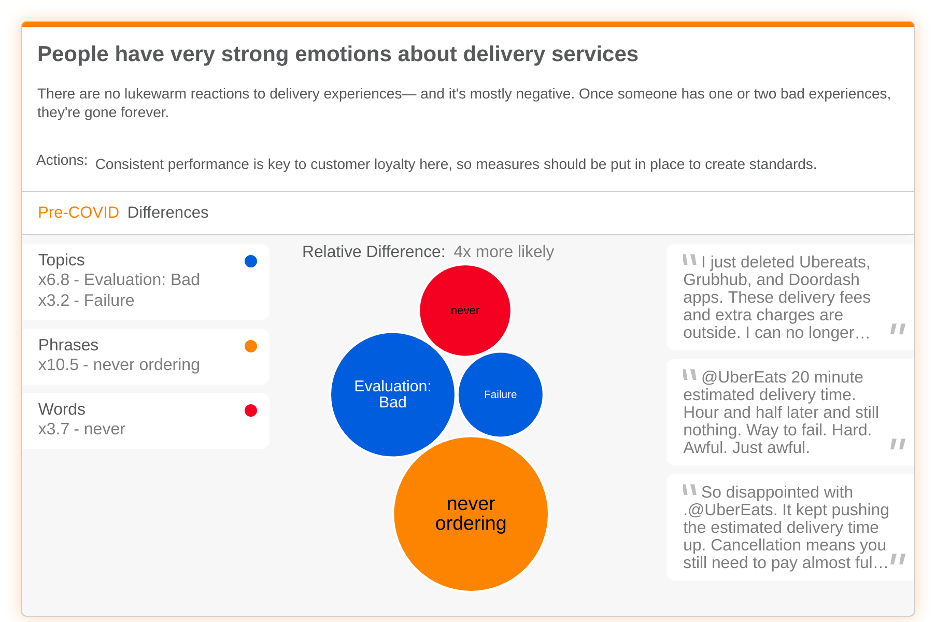

It’s unfortunate because much of what they’re vocal about is bad experiences, and people are 4x more likely to talk about how terrible an experience they’ve had – using strong words and phrases like failure and the “worst” and “never ordering from there again” – to times when they received good service. These people love to take to Twitter to vent about their displeasure and are quick to make it known where their loyalties lie or where they’ve moved to.
WTF – what’s the fee?
Before they even get to ordering food on the platform of their choice, there is a whole decision process that happens before they decide who to order from.


The number one factor that dictates this, is fees. This demographic’s main gripe with ordering delivery pre-COVID was the varying cost of delivery fees – and how much the delivery fees were dictated where they went to for their order.
The holistic experience
Delivery platform experiences seem pretty straightforward: open an app/website, find a restaurant you want to order from, place your order, wait for it to come, accept the delivery, eat the food.
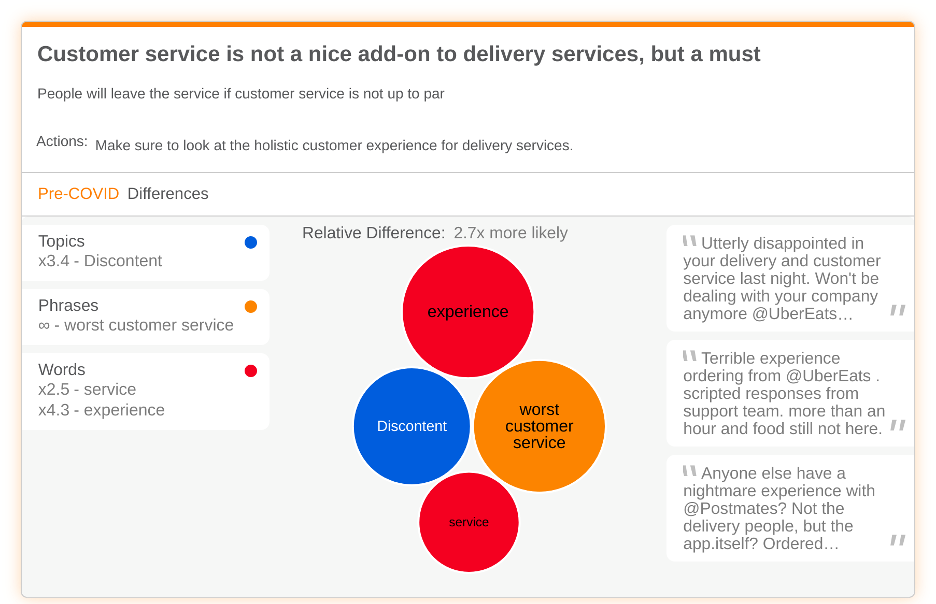

According to the people on Twitter – that’s not everything. Customer service is actually an important part of the experience, and if you forget that or don’t do that well, well, you probably won’t keep that customer.
A completely different mindset
Along the lines of what everyone has been saying about this lockdown, we’re all living in the “new normal” – and I found that to be true of the food delivery realm as well.
Delivery customers care about a whole different set of things when ordering during the corona lockdown, and unfortunately, it’s not currently looking very good for either of the platforms.
Safety first
Delivery services have started to offer contactless delivery and while customers appreciate that, they don’t think it’s good enough.
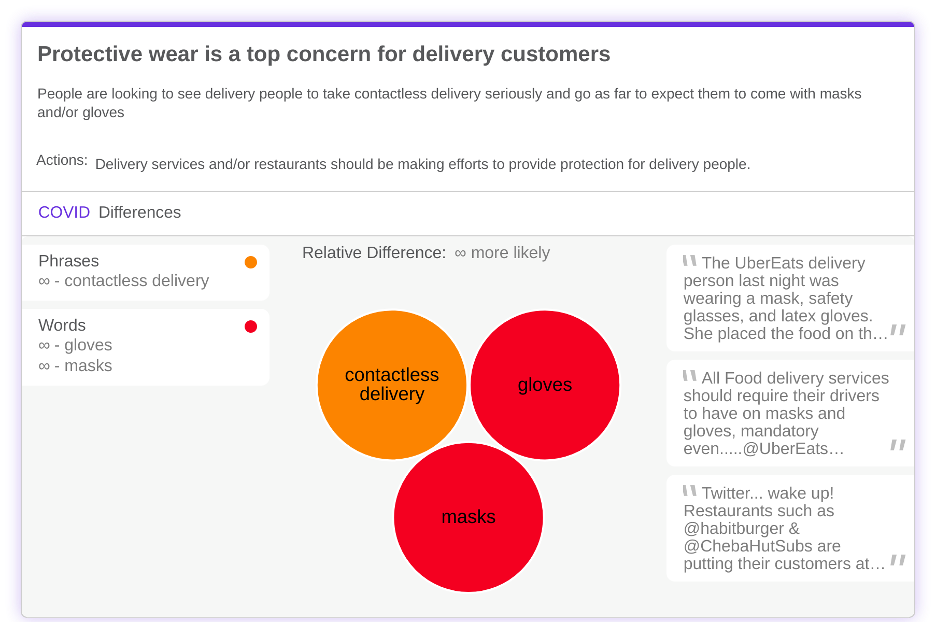

People are looking to see delivery people taking contactless delivery seriously, and go as far to expect them to come wearing masks and/or gloves. They’re tipping exponentially more for those delivery people who do, and if they don’t see that, they’re questioning the experience and using the platform altogether.
A double-edged sword
“Order from us to support local businesses!” is the cry of every food delivery platform right now. Which would be smart because people do want to support their local restaurants right now, but unfortunately many have done their research and these statements don’t match up to their face value.
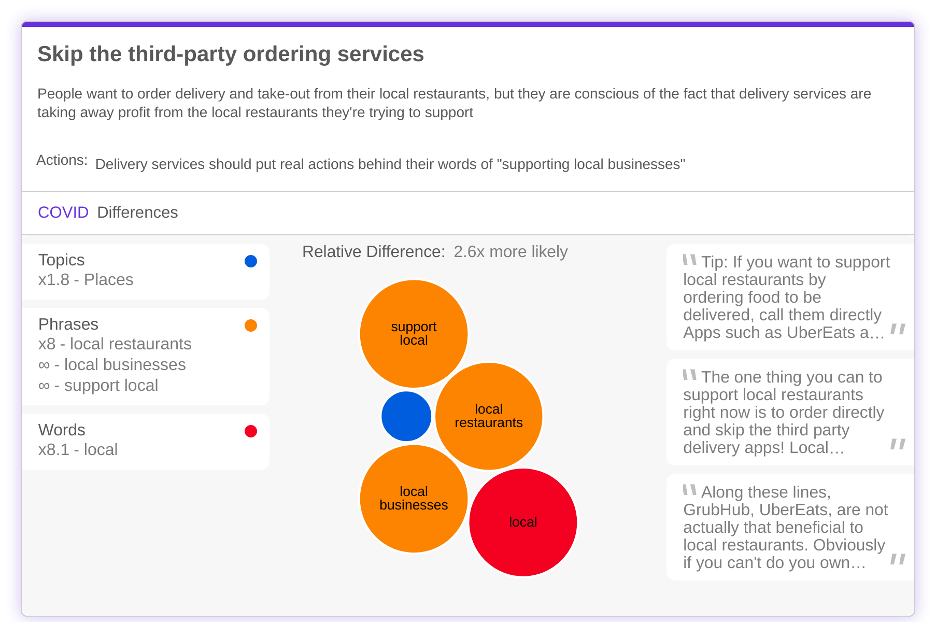

Customers are conscious of the fact that delivery services are taking away profit from the local restaurants they’re trying to support, the very reason they came to the platform in the first place. So while they’re 2.6 times more likely to order from and support local businesses during this time, that’s not necessarily a good thing for third party delivery services.
Tips & Tricks
When people do order food through delivery services during this time, they are very concerned about tipping.
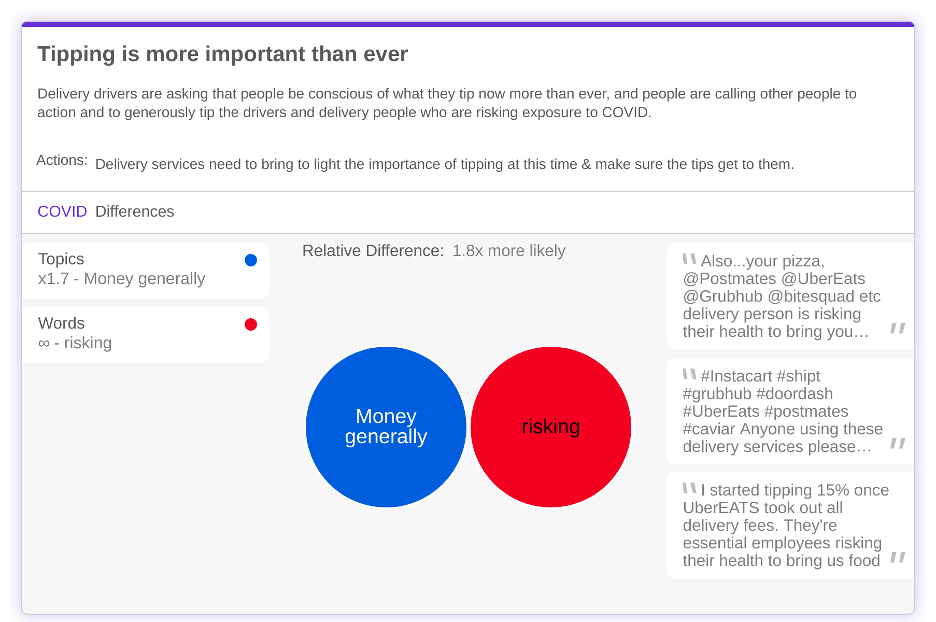

There is a general consensus that delivery people are essential workers and are risking themselves and their families to serve their community. Knowing that, delivery people and Twitter netizens have rallied together to ask people to support and appreciate them through giving generous tips.
There has also been some conversation calling delivery platforms out over their lack of concern on getting these tips to the drivers and delivery people properly, with people sharing instances of their tips getting refunded or never being charged. Those who are indeed turning to third party food delivery apps to support their local businesses and communities have the issue of tips and the way they are being handled by platforms top-of-mind, and as a meter for how willing they are to support the platform.
Ultimately, these delivery services exist because of, and for people. They’re operated by people, supported by people, and for people – so what people are saying about them, both before and during this pandemic, is reflective of that.
Even in how different the specific concerns are from each period, at the core, ultimately it seems that users care about and expect to see a human-centric approach and experience, from every angle, at all times.
Relative Insight can compare any language data set you can imagine, literally anything with words. Get in touch to see the platform in action and for some inspiration on how we can help your business:
